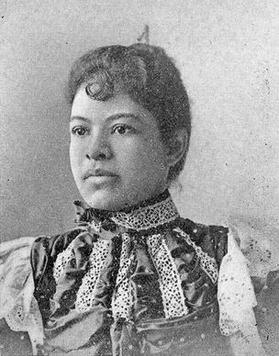
Wallace Earle Stegner was an American novelist, short story writer, environmentalist, and historian, often called "The Dean of Western Writers". He won the Pulitzer Prize in 1972 and the U.S. National Book Award in 1977.

The Utah Pride Festival is a festival held in downtown Salt Lake City in June celebrating Utah's diversity and gay, lesbian, bisexual, and transgender (LGBT) community. The event is a program of the Utah Pride Center, and includes the state's second-largest parade, after the Days of '47 Parade.

The Broad Ax (1895–1931) was a weekly newspaper that began publication on Aug. 31, 1895, originally in Salt Lake City, Utah, by Julius F. Taylor. After a series of conflicts with the Latter Day Saints, Taylor relocated the newspaper to Chicago, Illinois in 1899. The Broad Ax has been described as "the most controversial black newspaper in Chicago in the late nineteenth century," in some ways due to its criticism of Booker T. Washington and Tuskegee Institute. The paper covered African American cinema.

Ida Gray was the first African-American woman to become a dentist in the United States. At a very young age she became an orphan when her parents died. Later in her life she became interested in dentistry when she went to work in the offices of Jonathan Taft, an early advocate for women to learn dentistry. After her apprenticeship in his office, Gray was able to pass the entrance examinations and then attended the University of Michigan School of Dentistry. When she graduated, it was widely published that she was the first African American dentist in the United States and she was promoted as a role model for women to follow. Gray practiced in Ohio before settling in Chicago, where she remained until her death. She practiced for more than thirty years.

The first African Americans to arrive in Utah were fur trappers in the early 19th century. The second influx consisted of both freedmen who were converts to the Church of Jesus Christ of Latter-day Saints and slaves belonging to white converts. Later, most African American immigrants to Utah would migrate out for labor-related motivations. African Americans have traditionally been composed only a small part of the total population in Utah, with the 2010 census placing the percentage of African Americans at 1.06%. Utah ranks 40th in the United States for total African American population and 43rd in percentage of residents who are African American.

Various African-American newspapers have been published in Indiana. The Evansville weekly Our Age, which was in circulation by 1878, is the first known African-American newspaper in Indiana. Alternatively, some sources assign the title of first to the Indianapolis Leader or the Logansport Colored Visitor, both of which were first published in August 1879.
How Newtown Prepared is an American musical comedy staged in 1916 by the Tutt Brothers. It toured. The storyline features African American veterans of the American Civil War tricked into fighting, on the “wrong” side in the Spanish American War. Characters depicted included George Washington Bullion, who was part of previous Tutt brother farces including George Washington Bullion (1910) and George Washington Bullion Abroad (1915). The show had an African American cast.






